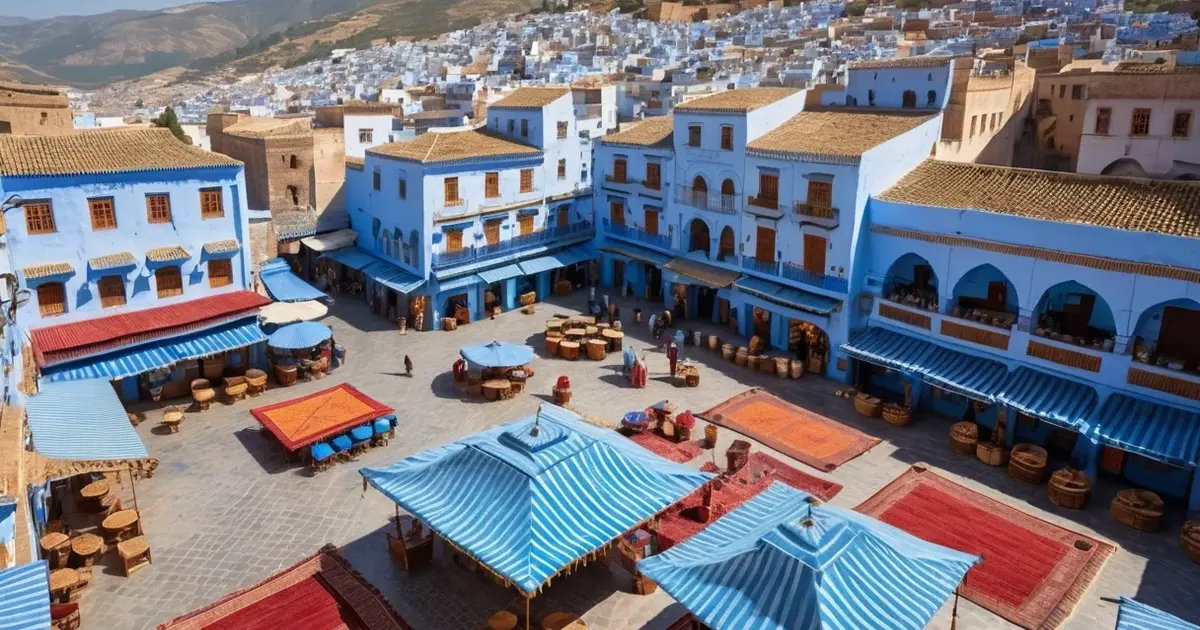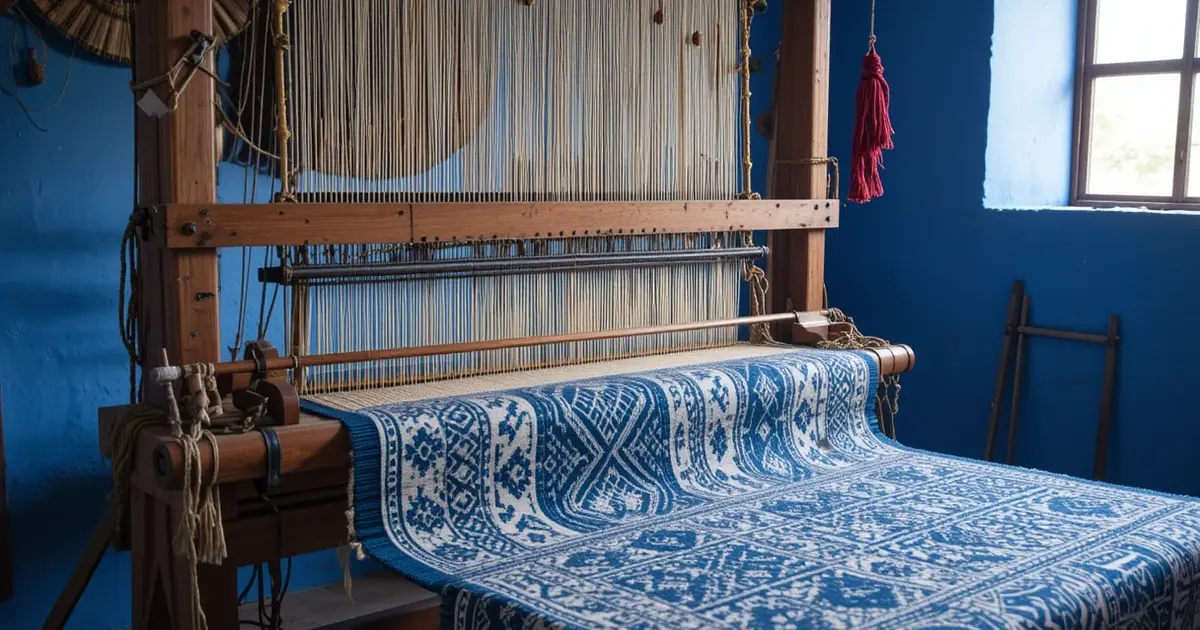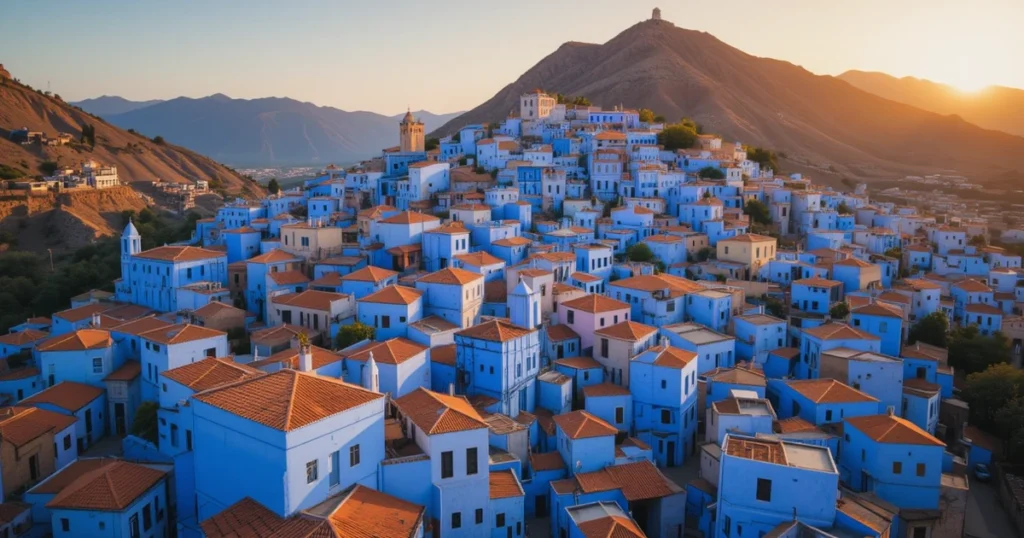There are places where time seems to flow differently. Chefchaouen, nestled in Morocco’s Rif Mountains, is one such rare treasure. Known as “the blue city,” it invites visitors to slow down and experience life differently. Here’s the story of an immersion that transformed my perspective on travel.
Arrival: The First Breath

The journey from Tangier had been long. The discomfort evaporated the moment I caught sight of the first blue houses emerging on the mountainside. The golden light of the setting sun caressed the indigo facades, creating a living painting of breathtaking beauty.
“Welcome to Chefchaouen, the city that takes its time,” said Karim, my driver. I dropped my bags at a small guesthouse run by Fatima, a woman in her sixties with sparkling eyes.
The mint tea she served released an enchanting fragrance. “Tea is like life,” Fatima philosophized. “You must take time to prepare it, then savor it slowly.”
Getting Lost to Find Yourself

The next day, I deliberately left my phone in my room. No GPS, just the freedom to wander through the blue labyrinth of the medina. Each turn revealed a new shade of blue.
“Why is everything blue here?” I asked an old man carving wood.
“Some say it’s to repel mosquitoes,” he replied. “Others tell that Jews brought this tradition. Me, I think blue soothes the soul and refreshes the eyes under our burning sun.”
Hassan – that was his name – invited me to sit. I watched his wrinkled hands transform a simple piece of wood into an intricately crafted box. His gestures were precise, patient, almost meditative.
By late morning, my steps led me to Outa el-Hammam square. The terraces were coming alive, stalls displaying their treasures: Berber carpets, woven baskets, argan oil soaps, colorful spices.
The Encounter That Changes Everything

In the afternoon, I discovered a small weaving workshop. Aïcha, a woman in her forties, was working on a traditional loom. Her fingers danced between the threads, creating a complex pattern in bluish hues.
“This is a very ancient Berber pattern,” she explained. “It tells the story of the mountains and rivers surrounding our city.”
Aïcha belonged to the fifth generation of a family of weavers. “Today, young people want everything instantly,” she sighed. “They don’t understand that a beautiful carpet can take months to create. But it’s precisely this slowness that gives it value.”
Fascinated, I asked if I could return the next day to learn some basic techniques.
The Learning: Weaving Time
True to my promise, I arrived at Aïcha’s workshop at dawn. The hours that followed were a lesson in humility. What seemed so fluid in her hands proved complex for my clumsy fingers.
“You’re too hasty,” she gently reprimanded me. “Breathe with the loom. Listen to its rhythm.”
I closed my eyes, took a deep breath, and started again. Gradually, my movements synchronized with the swinging of the shuttle. Time expanded until it lost all importance.
In the afternoon, other women joined us. They told me the history of Chefchaouen, its legends, its traditions. I learned that the city was founded in 1471 as a fortress against Portuguese invasions.
“We are not rich in money,” confided Samira, the eldest, “but we are rich in time. And that’s the most precious wealth.”
Departure: Taking the Essential

My last morning in Chefchaouen dawned under a fine drizzle that intensified the blues. Before leaving, I made one last detour to Aïcha’s workshop. She offered me a small square of fabric, the one I had begun to weave.
“It’s not perfect,” I protested.
“Nothing made with the heart is ever imperfect,” she replied. “Take it as a talisman against haste.”
Back in my daily life, I keep this small square of fabric on my desk. When the pace becomes too frantic, I touch it and remember the blue alleys where time stands still.
Chefchaouen is not just a destination to visit; it’s a mindset to cultivate. In our hyperconnected world, it reminds us of the forgotten art of taking one’s time.
If you’re fascinated by Moroccan culture, don’t miss exploring the preserved valley of Ourika or discovering the coastal charm of Martil and Tangier, where Mediterranean influences enrich the Moroccan experience.
Address Book:
- Dar Fatima Guesthouse: in the heart of the medina, breathtaking view and warm welcome.
- Aïcha’s Weaving Workshop: Hassan II Street, introductory classes available upon request.

